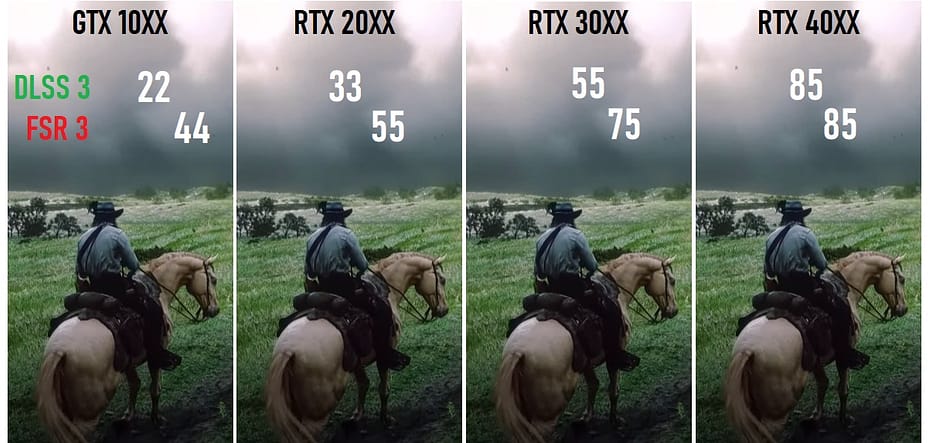Are you in the market for a new laptop, but feeling overwhelmed by the multitude of GPU options available? Look no further! In this comprehensive analysis, we’ll dissect user feedback, performance metrics, and expert opinions to provide you with clear insights into the world of laptop GPUs. From the MX250 to the RTX 4050, we’ll explore the strengths, weaknesses, and real-world implications of each GPU model to help you make an informed purchasing decision.
Key Takeaway
When it comes to selecting a laptop GPU, factors such as performance per watt, reliability, and price-to-performance ratio are crucial considerations. While newer GPU generations promise enhanced graphical fidelity and performance, user experiences reveal the importance of reliability and overall value. Ultimately, understanding your specific gaming needs and budget constraints is essential for choosing the right GPU for your laptop.
Unveiling User Experiences: Insights from the Community
Before diving into technical specifications and performance benchmarks, let’s explore real-life user experiences with various laptop GPUs. From reliability issues to gaming performance, user feedback offers valuable insights into the pros and cons of different GPU models.
User Feedback Highlights:
- Reliability Concerns: Users report reliability issues with certain laptop models featuring GPUs like the MX250. Issues include fan malfunctions, battery failures, and SSD issues, highlighting the importance of durability and build quality.
- Price-to-Performance Ratio: Despite performance limitations, users express satisfaction with budget-friendly GPU options like the GTX 1650. For casual gaming and everyday tasks, these GPUs offer a compelling balance between performance and affordability.
- Performance Expectations: Gamers seeking high-performance laptops emphasize the importance of GPU capabilities for running demanding titles like Red Dead Redemption 2 and Cyberpunk 2077 at optimal settings. While budget GPUs suffice for moderate gaming, enthusiasts prioritize performance for immersive gaming experiences.
Table: User Feedback Overview
| GPU Model | User Feedback |
|---|---|
| MX250 | Reliability issues, frequent component failures |
| GTX 1650 | Satisfactory performance for casual gaming, good price-to-performance ratio |
| RTX Series | High performance expectations, emphasis on graphical fidelity |
Analyzing GPU Performance Metrics: FPS per Watt and Beyond
Now, let’s delve into the technical realm of GPU performance metrics to better understand how different models stack up against each other. One key metric we’ll focus on is FPS per watt, which measures a GPU’s efficiency in delivering frames per second relative to power consumption.
FPS per Watt Analysis:
Table: FPS per Watt Comparison
| GPU Model | FPS per Watt |
|---|---|
| GTX 1650 | 0.55 |
| RTX 2050 | N/A |
| RTX 3050 | 0.56 |
| RTX 4050 | 0.78 |
Key Observations:
- Stagnant Efficiency: Across multiple GPU generations, FPS per watt ratios remain relatively consistent, indicating minimal improvements in performance efficiency.
- RTX 4050 Performance Jump: The RTX 4050 stands out with a notable increase in FPS per watt compared to its predecessors, suggesting significant advancements in efficiency and performance optimization.
Making Informed Decisions: Factors to Consider When Choosing a Laptop GPU
With a wealth of information at your disposal, how do you navigate the complex landscape of laptop GPUs? Consider the following factors to guide your decision-making process:
1. Performance Requirements:
Evaluate your gaming needs and desired graphical settings to determine the level of performance required from your laptop GPU. High-performance titles demand robust GPU capabilities, while casual gaming may suffice with budget-friendly options.
2. Reliability and Build Quality:
Take into account user feedback and reviews regarding the reliability and build quality of laptop models featuring different GPUs. A durable, well-built laptop ensures longevity and minimizes the risk of component failures.
3. Price-to-Performance Ratio:
Balancing performance with affordability is key when selecting a laptop GPU. Analyze the price-to-performance ratio of various GPU models to ensure you’re getting the best value for your budget.
4. Future-Proofing:
Consider future gaming trends and technological advancements when investing in a laptop GPU. Opting for a newer generation GPU with advanced features like ray tracing and DLSS can future-proof your gaming setup and provide a more immersive gaming experience.
Conclusion: Navigating the Laptop GPU Landscape
Choosing the right GPU for your laptop involves careful consideration of performance metrics, user feedback, and personal preferences. Whether you prioritize performance, reliability, or affordability, understanding the strengths and limitations of different GPU models is essential for making an informed decision. By leveraging insights from user experiences and technical analyses, you can select a laptop GPU that meets your gaming needs and enhances your overall computing experience.














